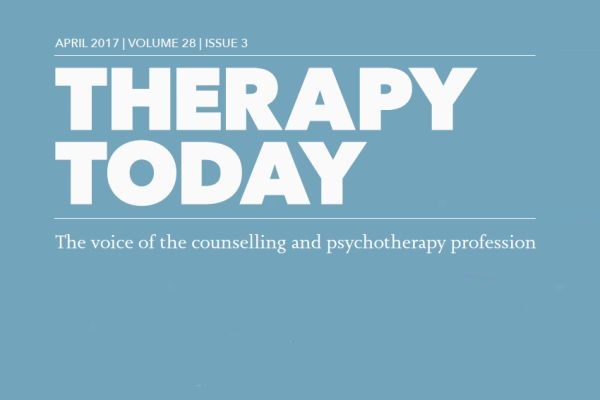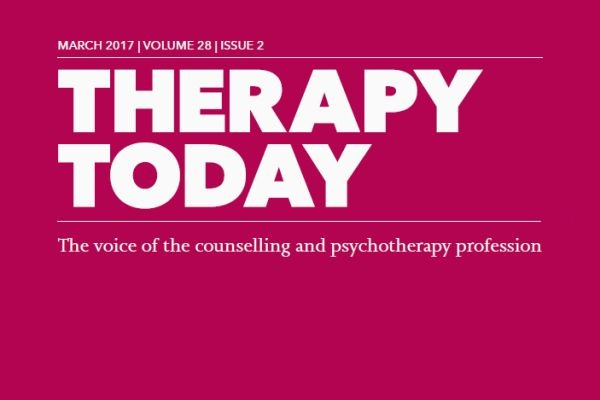We are in the midst of a digital revolution that is changing the way we communicate with each other and how we source and share information across the globe. The ubiquitous smartphone has created a 24/7 society where the boundaries between work and home have blurred, and there is an expectation that we are all instantly contactable. It amazes me how quickly we have normalised the seismic cultural changes of the last few decades. We no longer wonder that we can video-call loved ones on a different continent (for free!), or bat an eyelid at toddlers who can operate a tablet before they can walk or talk, or find it curious that we can ‘browse’ online for all our needs, whether that’s a new partner or a new pair of shoes.
For counsellors and psychotherapists, the digital revolution has extended our potential client pool worldwide, language and regulatory requirements permitting. We can market ourselves globally. We can offer face-to-face sessions from anywhere to anywhere, and be available at any time, if we so choose, at a press of a button. We have gained so much, including the ability to reach people who, for reasons of illness, disability, finance or geography, would not otherwise be able to access our services. We can even augment our work with, or be replaced by, apps.
But is there a price to pay in the quality of the work, for us, as practitioners, and for society in general? Are we seeing the advent of the therapy equivalent of Uber’s ‘tap and ride’?
Reaching clients
If we want to continue to reach new generations of clients, we have to do so on their terms, believes Sarah Worley-James, Chair of the Association for Counselling and Therapy Online. She is the creator and co-ordinator of the online counselling service at Cardiff University, which provides email, instant messaging and webcam sessions to its students. ‘In the 21st century, young people’s preferred means of communication is via a range of ever-changing online platforms and phone apps. It is reasonable for them to expect to be able to contact and work with professionals online in a similar way.’
In the US, clients can now subscribe to Talkspace, billed as ‘the leading online therapy platform’, and benefit from ‘therapy without travelling to an office – and for significantly less money than traditional therapy’. A monthly subscription of $128 allows them unlimited text messages with a therapist. For $276 a month, they get four video sessions and unlimited texting. Psychotherapists can earn up to $3,000 per month by counselling users via phone or text messaging.
In the UK, Stillpoint Spaces similarly provides an encrypted video-conferencing platform, in addition to face-to-face therapy, worldwide.
Search for ‘mental health’ in an app store and you will find more than 2,000 apps, including those that claim to help you manage anxiety and the symptoms of post-traumatic stress disorder. Mental health has been described as the ‘next frontier’ for technology companies. In its 2016 report, Technology and the Future of Mental Health Treatment, the US National Institute of Mental Health (NIMH) predicts that behavioural health apps will increasingly incorporate ‘face-to-face counselling to provide a balance between technology and the human touch’. The World Health Organization has also backed the use of mental health apps to promote self-care.1
Studies suggest they are effective. For example, in a recent study of 99 adults with symptoms of depression or anxiety, or both, who used a mental health app called IntelliCare for eight weeks, 37% of those with depression and 42% of the anxiety sufferers reported a complete alleviation of symptoms at the end. However, the study lacked a control group, so the findings have only limited validity, and it’s worth noting that 64% of the group were also taking medication and 22% were also having psychotherapy.2
Emma Broglia, a PhD student at the University of Sheffield whose research is being funded by BACP, is currently studying the use of apps to supplement face-to-face therapy in a student counselling service. One of her research projects involves a highly rated app called Pacifica, a CBT-based programme that allows users to track moods and challenge unhelpful thoughts. Pacifica is one of 10 mental health apps recently recommended by NHS Choices.3
A group of 20 students were encouraged to use the app to map their mood and carry out relaxation exercises in between therapy sessions, with the option of discussing their experiences with their therapist. The therapists used a range of modalities, including CBT and person-centred and integrative counselling. ‘The study is still under way but results from an initial focus group have been positive – clients are reporting feeling that they have more control over their wellbeing,’ says Broglia. ‘The levels of depression and anxiety have been measured using PHQ-9 and GAD-7, and what has been surprising for the therapists is that even those at the severe end of the scale have experienced benefits from using the app.’ However, Broglia believes that the current ‘gold rush’ of mental health apps should raise concerns. ‘The issue is that these apps are designed by developers who do not have a therapeutic or clinical background, and very few have been the subject of clinical trials,’ she points out.
A different process
The mistake is to think that, just because we are comfortable using Skype socially, we are equipped to work effectively online, says Dr Gillian Isaacs Russell, psychoanalyst and author of Screen Relations: the limits of computer-mediation in psychoanalysis and psychotherapy. ‘In 2008, I closed a 30-year psychoanalytic practice in the UK and moved to rural South Dakota. A couple of previous patients and supervisees hadn’t realised I had moved and asked to work with me. I became enthusiastic about working online – this was going to be a magical solution to the problem! But I sleepwalked into the experience,’ she says. ‘It’s not just that we lose elements of communication; working remotely fundamentally changes the process. Therapists are resistant to thinking about this – we think we’re communicating in the same way, but the research shows many differences. We need to become familiar with the emerging research. It has serious implications for the way we practise, including the way we set our fees.’
She also found she needed a different kind of focus to keep the connection going. ‘The more you have to concentrate, the less you can relax into presence. It’s more cognitive – you can’t even approach that feeling of free-floating attention or reverie.’
Yet, despite this feeling of intense concentration, she found that her ‘state dependent’ memory – the memory on which we rely to access details of what was said the last time the client was sitting opposite us – was impaired, making it harder to remember the content of the sessions. ‘Sixty per cent of communication is non-verbal. That implicit, non-verbal communication that is central to what you do in the consulting room isn’t going to happen in the same way online,’ she warns.
But the most significant difference between face-to-face and online work is the loss of ‘presence’, says Dr Isaacs Russell. ‘Presence is a core neuropsychological phenomenon – it’s an organism’s capacity to locate itself in the external world, and the ability to interact with another in a shared physical environment enables the nervous system to recognise that it is in an environment outside of itself that is not a dream state or a product of its mind. The experience of embodiment in a shared environment is essential to our experience of being. Evolution prepared us to be embodied beings, sharing the same space, so all screen relations are simulations of this relational experience.’
Escaping the mess
One potential cost of the digital revolution may be the emergence of what is being tagged the ‘empathy gap’. According to a 2010 meta-analysis of studies by Sara Konrath at the University of Michigan,4 there has been a 40% decline over the past 30 years in the ability of students to recognise and identify other people’s feelings. In comparison with their peers in the late 1970s, students today are less likely to agree with statements such as ‘I sometimes try to understand my friends better by imagining how things look from their perspective’ and ‘I often have tender, concerned feelings for people less fortunate than me’. And the biggest decline has happened since 2000, when mobile phones became widely available.
‘Research shows that when people are together, say for lunch or a cup of coffee, even the presence of a phone on the table – even a phone turned off – does two things,’ says clinical psychologist Sherry Turkle, Abby Rockefeller Mauzé Professor of the Social Studies of Science and Technology at the Massachusetts Institute of Technology (MIT), and author of the book Reclaiming Conversation: the power of talk in a digital age. ‘First, it changes what people talk about – it keeps conversation light because the phone is a reminder that at any point we might be interrupted, and we don’t want to be interrupted when we’re talking about something important to us. Second, conversation with phones on the table, or even phones in the periphery of our vision, interferes with empathic connection. Two-person conversations that take place with a phone on the table leave each person feeling less of a sense of connection and commitment to each other.’
The shift towards online communication via Facebook, texts, email and platforms such as WhatsApp is part of a flight from the ‘messiness’ of spontaneous conversation, Turkle believes. ‘What people are fleeing is the kind of conversation that talk therapy tries to promote – the kind in which intimacy flourishes and empathy thrives. Online, we can curate the self as we want it seen. We can edit our conversation. We can cultivate the illusion that we can say the “right thing”. Contrast all of this with the simplest lessons of talk therapy: there, we quickly learn that, when we stumble and lose our words and are left in silence, this is when we may reveal ourselves most to each other.
‘We’ve always wanted to escape what’s most difficult in our relationships, and technology gives us a way.’
Online disinhibition
For some clients, this lack of ‘presence’ is a bonus: working online provides them with a ‘zone of proximal distance’, creating a sense of safety, says Worley-James. ‘Students on the autistic spectrum find the noisy, bright, intense sensory experience of entering a busy student support centre stressful and difficult to cope with. This may deter them from asking for our support, or, if they do, they may come to the session in a heightened state of anxiety. The environmental stressors of a busy building can also negatively affect students with mental health problems, such as social anxiety, creating a barrier to them accessing our service. I have also worked with transgender students who are used to accessing peer support through online forums. They may feel safe to be themselves in the virtual world, when face-to-face relationships can be fraught with uncertainty about the other person’s hidden opinion.’
There can also be a positive benefit from the ‘online disinhibition effect’ – the abandonment of the social rules normally applied to face-to-face communication, which is often associated negatively with cyberbullying. However, says Worley-James, ‘The effects of online disinhibition can be hugely beneficial and therapeutic for many clients. The anonymity of communicating by email or instant messenging allows some clients to explore sensitive topics without cultural or gender issues intruding and limiting their freedom to do so. I am struck again and again by how quickly clients open up online, and how effective the online therapeutic relationship can be.’
Turkle warns that therapists are in danger of slipping into digital therapy without ever really questioning its usefulness. ‘At first, treating a client by Skype is presented as “better than nothing”. Gradually, what you can do on Skype begins to be presented as equivalent to, or maybe better than, what you can do with the client in the room. Why are therapists so quick to abandon the body and what it brings to our understanding?’ she asks. ‘If you give up on the body, you open the door for treatment by programs, by robots, by all kinds of artificial intelligences that also don’t have bodies. This seems a stretch, but it is a stretch that is ready to be marketed to you.’
The answer is, of course, that we need to ensure that we make good use of what digital technology can bring to our work while ensuring it doesn’t dictate how we work, negatively affect the therapy relationship, or become misused as a cheap alternative to face-to-face therapy.
Return to embodied therapy
Isaacs Russell predicts that we will soon see a renewed valuing of talk therapy, and a need for it, by a generation who have become disillusioned with social networking: ‘My prediction is that young people growing up with technology will have a longing for something authentic and we will see a greater demand for embodied therapy.’
Turkle agrees: ‘Psychotherapists are experts at the kind of talk that digital culture needs most, the kind of talk in which we give each other full attention, the kind of talk that’s relational, rather than transactional. What therapists need to recognise is the reason we need to talk: to forge relationships that are the triumph of messy, breathing human connection over the cold instrumentality of treating each other as apps. This does not mean that virtual treatment doesn’t have a place. But it should not be allowed to sneak in as a substitute.
‘Psychotherapy has a moment to assert what it knows best: that the body does matter – that being in the room does matter.’
Digital policy
We owe it to our clients to seek information and educate ourselves about digital life, says psychotherapist Aaron Balick, author of The Psychodynamics of Social Networking. ‘Most therapists start their training in mid-life, and they are trained by mid-life digital immigrants who are generally later to the table than these trainees themselves, so it is taking our field a while to catch up with the zeitgeist. I have come to a place where I think every therapist should have a digital policy because we don’t have the privacy we had 20 years ago.’
Balick’s digital policy includes an undertaking not to google a client or follow them on social media, and he suggests that his clients do the same for the duration of their work together. ‘I can’t stop clients googling me, but I can request that, if they do so and they find something out about me that they want to discuss, they bring it into the room. I tell clients that this is how I keep this relationship different from other relationships, and protect their confidentiality,’ he says.
We also need to think about the culture of ‘implicit immediate availability’ that smartphones, email and texting can create, he argues. ‘How will you cope if you find digital native clients are less boundaried about contacting you between sessions? I no longer receive emails on my smartphone. I realised that receiving requests for information or actions that I wasn’t in a position to carry out until I was back in my office was creating anxiety.’ He has also re-evaluated his relationship with social media. ‘I have come to view it as somewhat pernicious,’ he says; he has turned off all his notifications and now accesses it when he chooses to. ‘This is the ideal, of course. Just like everyone else, I’m liable to check more than I ought to and impulsively post things I probably shouldn’t. It’s a work in progress.’
Sally Brown is a counsellor and coach in private practice (therapythatworks.co.uk), a freelance journalist, and Executive Specialist for Communication for BACP Coaching.
More from Therapy Today

What turns the lights back on?
Free article: Sally Brown reports on what neuroscience is discovering about the effects of depression on the human brain and the changes wrought by therapy. Therapy Today, April 2017

Is counselling women's work?
Free article: Female counsellors outnumber male by more than five to one. Sally Brown wonders why. Therapy Today, March 2017

Through the gate
Free article: Catherine Jackson visits HMP Styal, where a pioneering counselling service has developed new ways of working with offenders on short-term sentences. Therapy Today, February 2017
References
1. www.who.int/mental_health/action_plan_2013
2. Mohr DC et al. IntelliCare: an eclectic, skills-based app suite for the treatment of depression and anxiety. Journal of Medical Internet Research 2017; 19(1): e10.
3. www.nhs.uk/Conditions/stress-anxiety-depression/Pages/mental-health-apps.aspx
4. Konrath S, O’Brien E, Hsing C. Changes in dispositional empathy in American college students over time: a meta-analysis. Personality and Social Psychology Review 2011; 15(2): 180–198.
